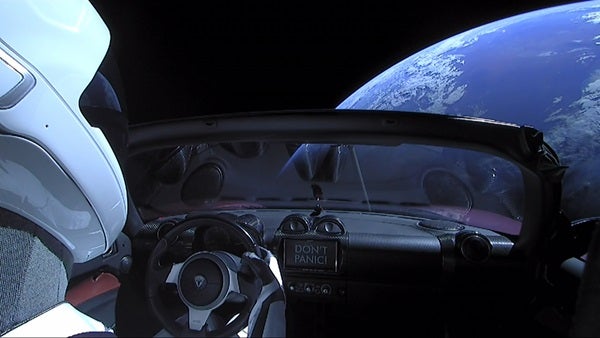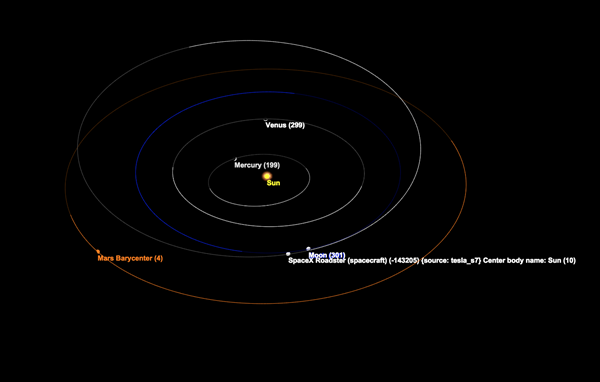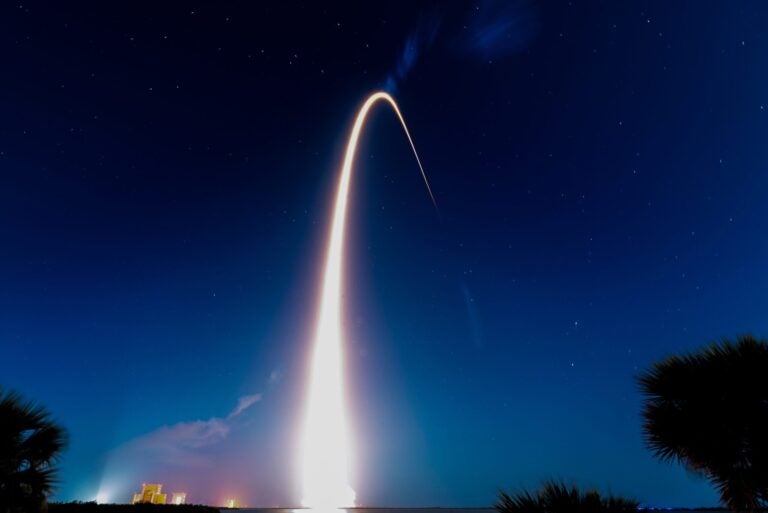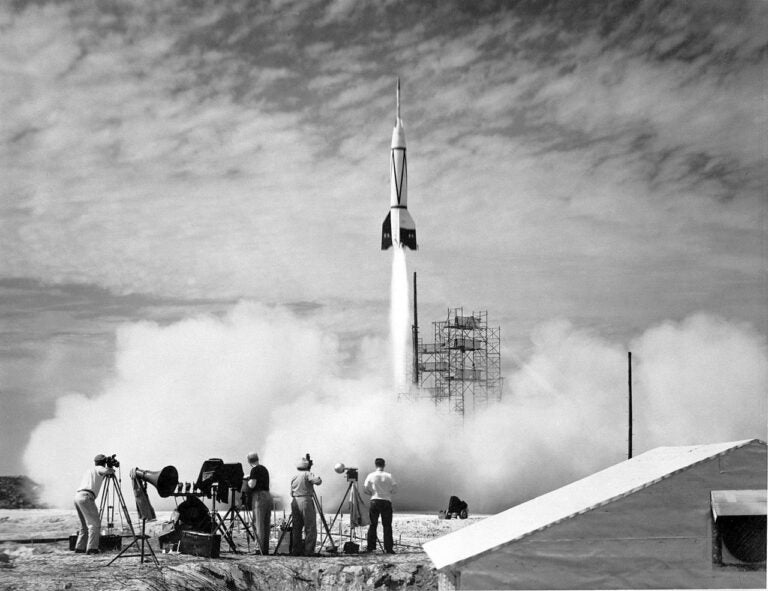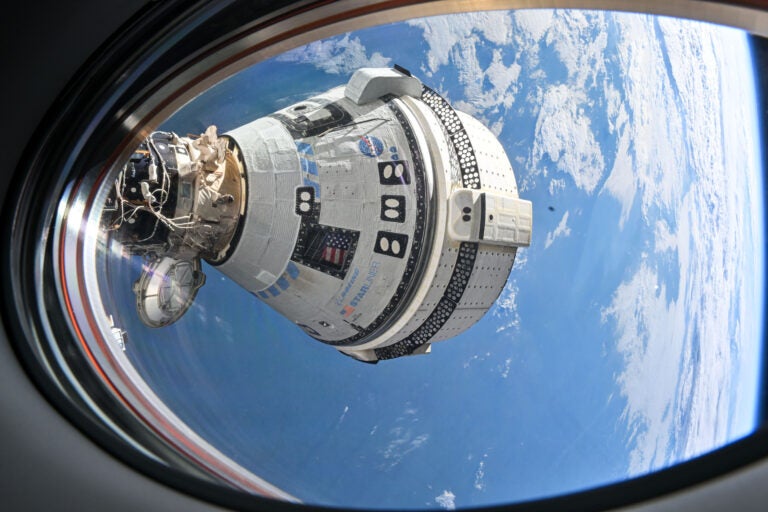The answer, as it turns out, is probably not. A paper posted on Cornell University Library’s arxiv.org preprint server February 13 (and to be submitted to the Monthly Notices of the Royal Astronomical Society) with the jaunty title The random walk of cars and their collision probabilities with planets concludes that there is just a six percent chance that the Tesla will collide with Earth in the next one million years. The chance does rise to 11 percent in the next three million years; but even if you’re a pessimist, “it will either burn up or maybe one component will reach the surface,” said first author Hanno Rein in a press release. “There is no risk to health and safety whatsoever.”
The Tesla, which is estimated to rotate about once every five minutes based on reflected light measured with the 4.1-meter SOAR telescope in Chile, is on an orbit that will cross the orbits of not only Earth, but also Venus and Mars, several times over the course of its dynamically stable lifetime. According to Rein, this orbit is not unlike that of many near-Earth Asteroids regularly observed. In fact, the Tesla has been officially labeled by NASA as a Near-Earth Object and listed in the Jet Propulsion Laboratory’s Horizon’s database as object -143205 SpaceX Roadster (spacecraft) (Tesla). It is one of about 150 manmade objects in the database, which allows you to chart any object’s position on the sky. According to the database, the Tesla is currently following an orbit with a perihelion of 0.99 astronomical units (AU, where 1 AU is the Earth-Sun distance) and an aphelion of 1.67 AU (Mars’ average distance from the Sun is about 1.5 AU).
The Tesla’s first close pass of Earth will occur in 2091; after that, it has a 50 percent chance of continuing to orbit for a few tens of millions of years, before it either collides with a planet or falls into the Sun. For now,it’s on its way out past Mars, carrying an appropriate message: Don’t panic.

